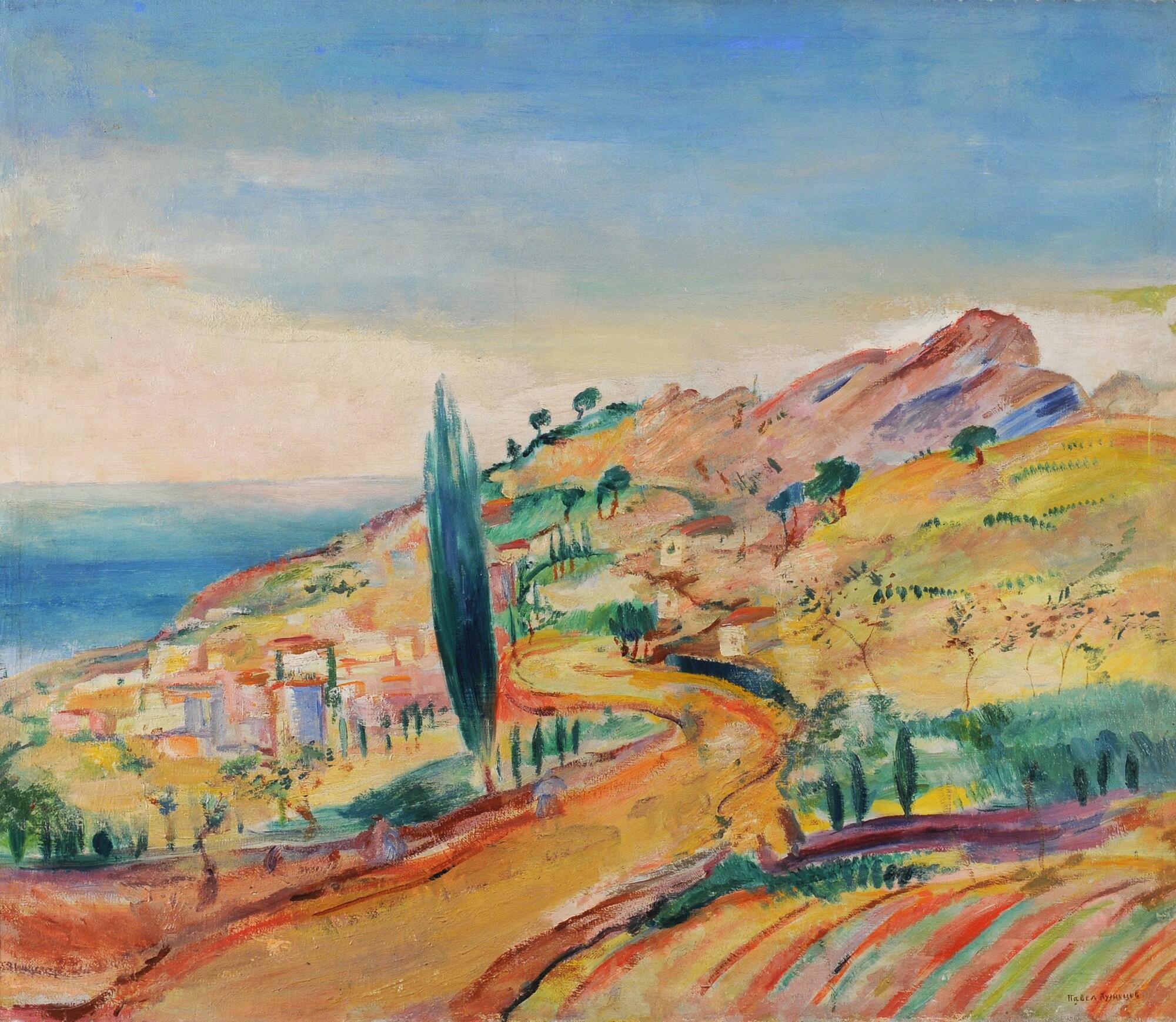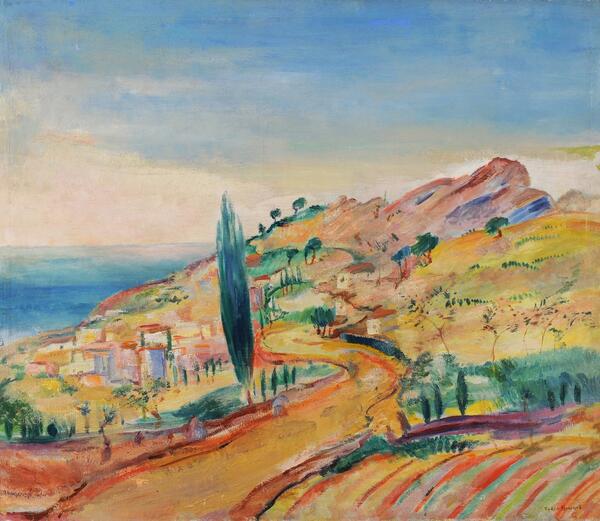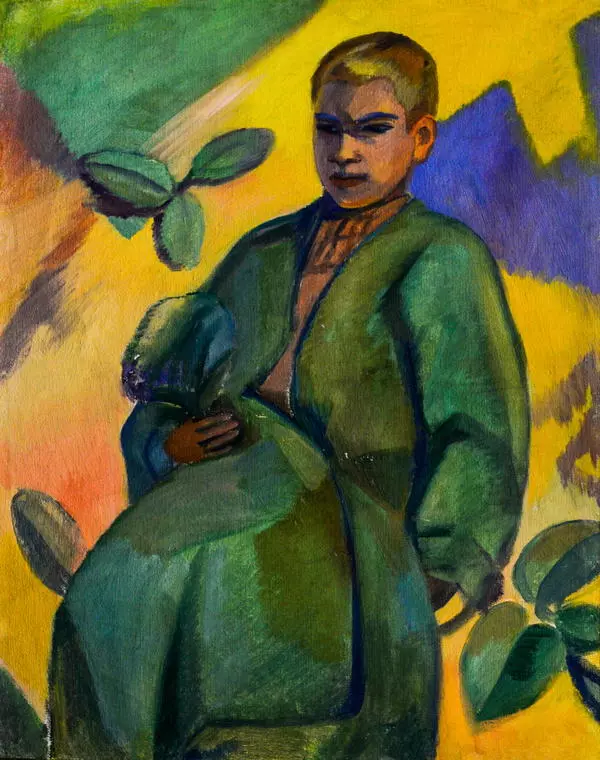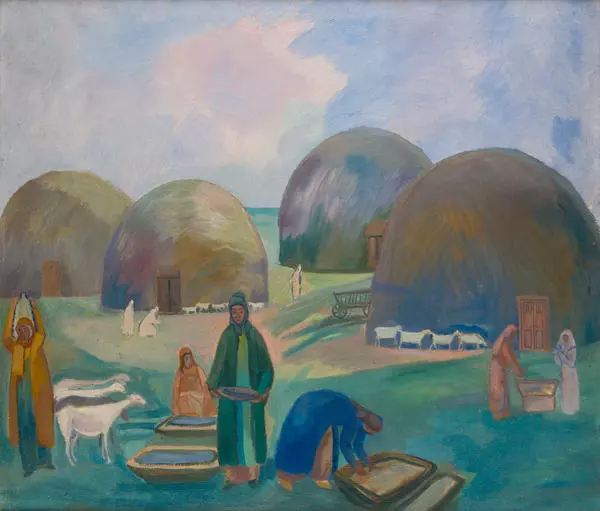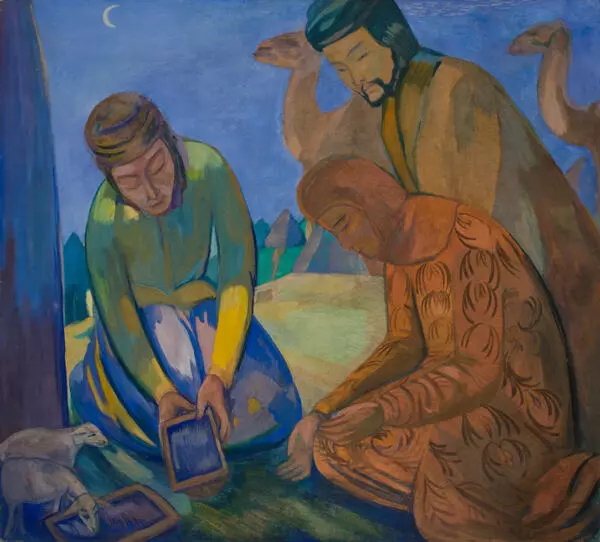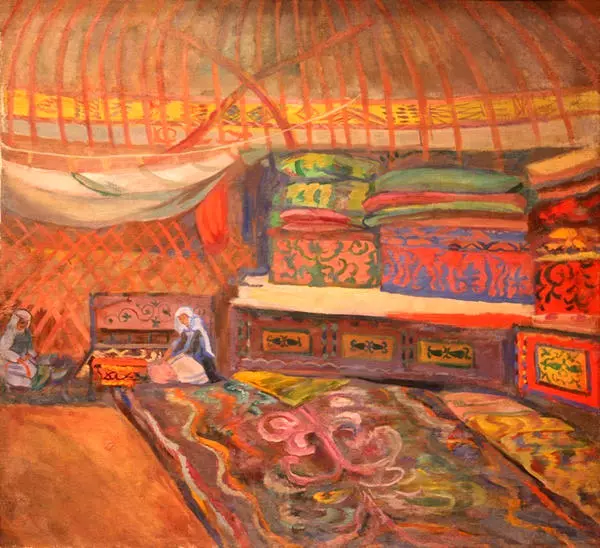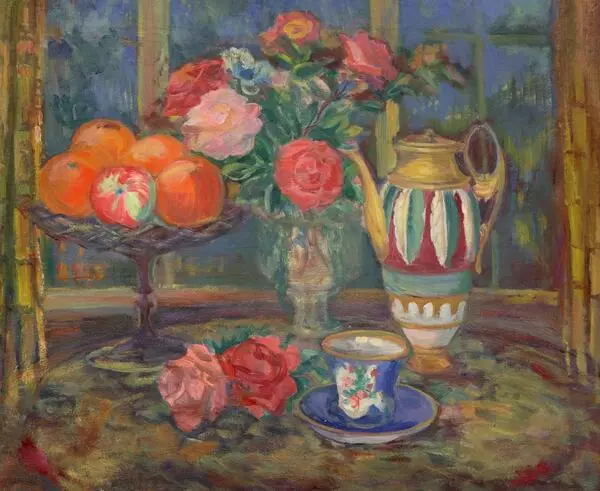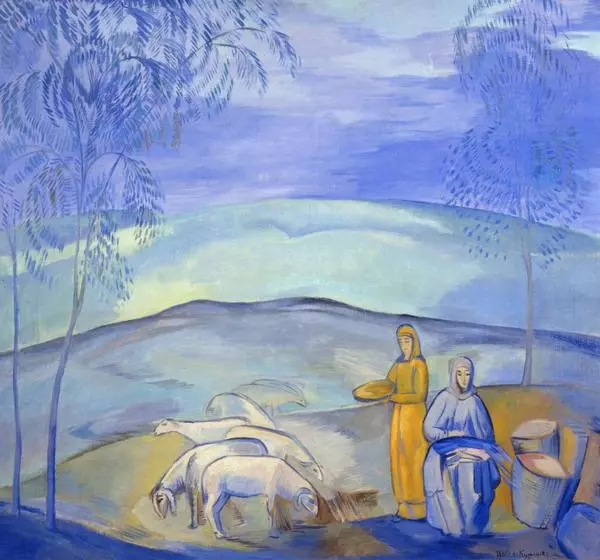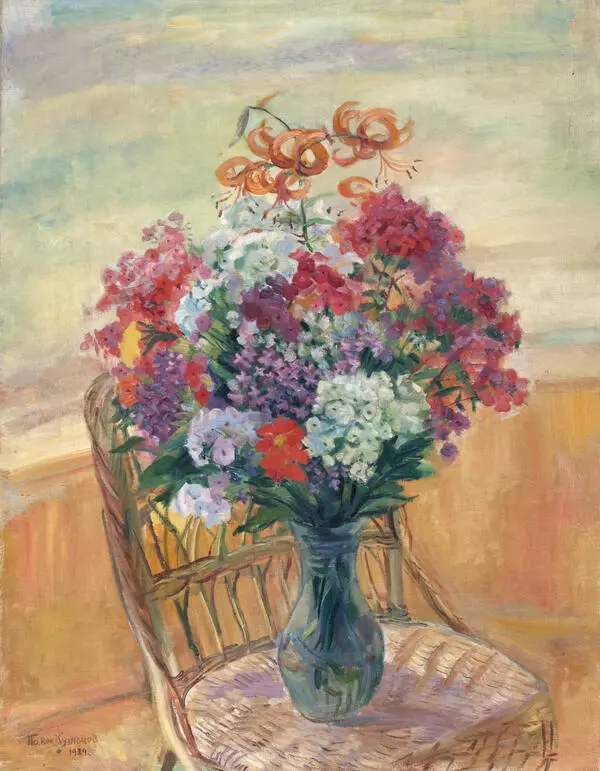From 1907-1912, together with fellow Saratov residents Petr Utkin and Alexander Matveyev, he was involved in design work on the Noviy Kuchuk-Koi Estate, which is located not far from Simeiz, on the southern coast of the peninsula. During the Soviet era, Pavel Kuznetsov, along with his wife Elena Bebutova, visited Crimea several times. The trips resulted in a series of works with views of the picturesque scenery in the south. The landscape Road to Alupka (1926), which is now kept in the Radishchev Museum, is one of those.
Painted unrestrainedly, and seemingly all in one breath, this picture is imbued with a cheerful mood and bright, optimistic worldview. A native of Saratov, Pavel Kuznetsov (1878-1968) lived a long life chock-full of interesting events. The artist’s legacy is extensive and diverse. He is known as one of the organizers of Symbolism exhibitions in the early twentieth century in Saratov and Moscow, a theater set decorator who worked together with the renowned Alexander Tairov, a monument sculptor and book illustrator. His restless nature was on an eternal quest, and constantly demanded movement. He drew creative energy and inspiration from his travels, which were an integral part of his destiny. Without letting go of his brush and pencil, he drove through Central Asia, the Caucasus, and the Baltic states. The artist had several occasions to go to the Crimea. by perception. The serpentine ribbon of the road runs upwards, seemingly toy-like trees are crowded together along its sides, houses with red roofs are sculpted to each other, the sea invitingly turns blue across the distance, mountain peaks sparkle in the sun, horizontal views are cut by the vertical of a cypress pressing up to the sky. The space in the picture looks flattened, and unfolds from below upward, as in an ancient Oriental miniature.
The artist organizes the composition with repetitive elements and complex color schemes.
Painted unrestrainedly, and seemingly all in one breath, this picture is imbued with a cheerful mood and bright, optimistic worldview. A native of Saratov, Pavel Kuznetsov (1878-1968) lived a long life chock-full of interesting events. The artist’s legacy is extensive and diverse. He is known as one of the organizers of Symbolism exhibitions in the early twentieth century in Saratov and Moscow, a theater set decorator who worked together with the renowned Alexander Tairov, a monument sculptor and book illustrator. His restless nature was on an eternal quest, and constantly demanded movement. He drew creative energy and inspiration from his travels, which were an integral part of his destiny. Without letting go of his brush and pencil, he drove through Central Asia, the Caucasus, and the Baltic states. The artist had several occasions to go to the Crimea. by perception. The serpentine ribbon of the road runs upwards, seemingly toy-like trees are crowded together along its sides, houses with red roofs are sculpted to each other, the sea invitingly turns blue across the distance, mountain peaks sparkle in the sun, horizontal views are cut by the vertical of a cypress pressing up to the sky. The space in the picture looks flattened, and unfolds from below upward, as in an ancient Oriental miniature.
The artist organizes the composition with repetitive elements and complex color schemes.
’ The Crimean landscapes in Kuznetsov’s works are filled with inner movement, which is emphasized by the linear rhythmic and graphic texture ” wrote Dmitriy Sarabyanov.
Light touches of the brush across the surface of the canvas seem to outline the contours of the objects. and color them with iridescent shades of different colors that seem to be overbrimming - from golden yellow to light blue.
The richness of the palette, and the purity and transparency of the colors, make this picture akin to watercolor painting.
The richness of the palette, and the purity and transparency of the colors, make this picture akin to watercolor painting.
